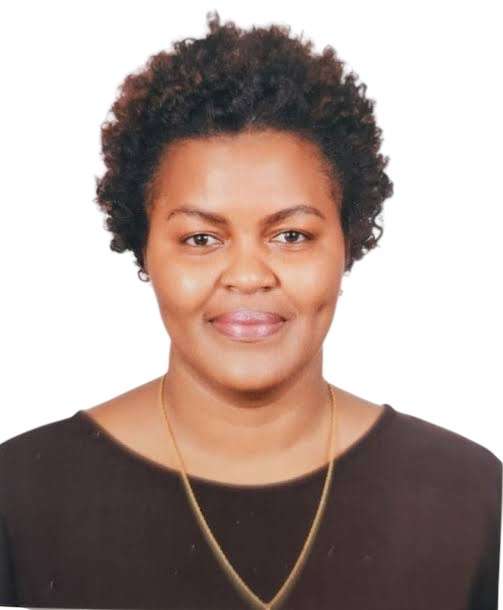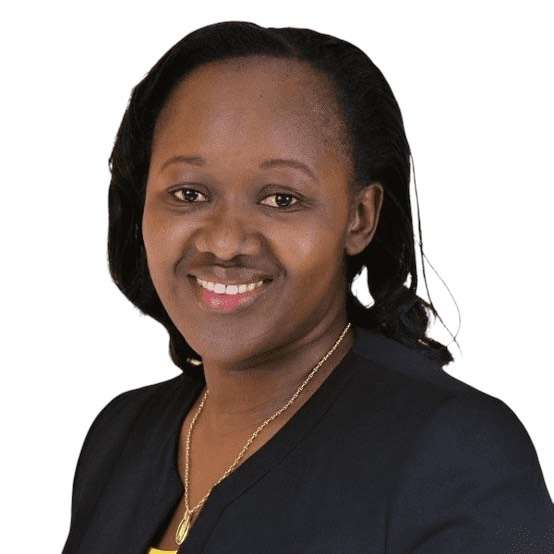Empowering Women Through Financial Inclusion: Building a Sustainable Future

Adah Mukubi, CIS Kenya

Mercy Nehema, Creditinfo Kenya

Lukania Makunda, FSD Kenya

Jackline Ogero, KWFT
“The MSME Loan Performance Report 2024 highlights that women entrepreneurs are more likely to face collateral challenges due to lower asset ownership compared to men. This calls for innovative solutions, such as group-based lending models, flexible repayment schedules, and alternative credit scoring mechanisms that consider women’s informal financial activities. By designing products that align with women’s lived experiences, financial institutions can unlock their full economic potential.”
Key Insights from the CIS Kenya International Women’s Day Webinar
Financial inclusion is a cornerstone of economic growth and social transformation. Yet, despite global advancements, women continue to face disproportionate barriers in accessing financial services. On International Women’s Day (IWD), CIS Kenya hosted a webinar that brought together thought leaders, policymakers, and practitioners to explore the state of women’s financial inclusion, identify persistent challenges, and chart actionable pathways toward sustainable change. The discussions highlighted critical areas that demand immediate attention to accelerate women’s economic empowerment.
1. The Imperative of Financial Literacy
A central theme of the webinar was the transformative power of financial literacy. According to the World Bank’s Global Findex Database 2021, women are significantly more likely than men to lack knowledge about financial products, which limits their ability to save, invest, or access credit. This knowledge gap underscores the urgent need for targeted financial education programs that equip women with the skills to navigate financial systems confidently.
The 2024 FinAccess Household Survey further reveals that women’s financial exclusion is often exacerbated by lower education levels and limited access to formal employment. Compounding this issue, the CIS Kenya MSME Loan Performance Report (2024) highlights a stark disparity: female-led micro, small, and medium enterprises (MSMEs) receive far fewer loans than their male counterparts, despite demonstrating stronger repayment rates. This disparity points to a pressing need for financial literacy initiatives that not only educate women on managing finances but also empower them to leverage credit effectively.
2. Maximizing the Impact of Women-Friendly Financial Products
While innovation in financial products is essential, the webinar emphasized the importance of increasing awareness and accessibility of existing solutions. Many financial institutions have introduced credit and savings products tailored for women, yet adoption remains low due to limited visibility and trust barriers. Reports from FSD Kenya and CGAP suggest that bridging this gap requires proactive engagement, strategic marketing, and development communication efforts tailored to women in both urban and rural areas.
A CIS Kenya-JICA study found that despite the availability of credit products targeting women, uptake remains hindered by accessibility challenges and a lack of awareness. The study recommends prioritizing financial literacy campaigns and improving the visibility of these products. Additionally, the MSME Loan Performance Report reveals that only 36% of MSME loans go to women, with men receiving 64% of both the value and volume of loans. Addressing this imbalance demands not only innovative products but also concerted efforts to ensure existing solutions reach their intended beneficiaries.
3. Access Alone Is Not Enough: Designing Solutions for Women’s Realities
One of the key takeaways from the webinar was that access to financial services is only the first step. For financial inclusion to be meaningful, products and services must be designed with women’s unique realities in mind. Women often face distinct challenges, such as irregular income streams, caregiving responsibilities, and limited collateral, which traditional financial products fail to address.
For instance, the MSME Loan Performance Report highlights that women entrepreneurs are more likely to face collateral challenges due to lower asset ownership than men. This calls for innovative solutions, such as group-based lending models, flexible repayment schedules, and alternative credit scoring mechanisms that consider women’s informal financial activities. Financial institutions can unlock their full economic potential by designing products that align with women’s lived experiences.
4. The Role of Credit Bureaus in Bridging the Gender Gap
Credit bureaus play a pivotal role in promoting financial inclusion by providing lenders with the data needed to assess creditworthiness. However, data from Kenya’s credit bureaus reveals significant gender disparities in credit access. According to a 2023 report by Metropol Credit Reference Bureau, women account for only 35% of total credit users in Kenya, despite representing nearly half of the population. This gap is even more pronounced in rural areas, where women’s participation in formal credit systems is significantly lower.
The report also highlights that women tend to have thinner credit files, meaning they have limited credit histories compared to men. This is often due to their reliance on informal financial networks, such as chamas, which are not captured in formal credit reporting systems. To address this, credit bureaus are increasingly exploring alternative data sources, such as utility payments, mobile money transactions, and savings group records, to build more comprehensive credit profiles for women. By leveraging these insights, lenders can make more informed decisions and extend credit to women who have historically been excluded.
5. The Power of Development Communication and Awareness
Effective communication is a linchpin of financial inclusion efforts. The webinar highlighted the role of storytelling, grassroots engagement, and culturally relevant messaging in demystifying financial services and encouraging women to participate in formal financial systems. A 2019 International Finance Corporation (IFC) study found that financial service providers investing in targeted communication strategies see higher adoption rates among women.
FSD Kenya reports that women often rely on informal financial networks, such as chamas (savings groups) or shopkeeper credit, rather than formal banking institutions. To shift this dynamic, development communication strategies must align with women’s existing financial habits and cultural contexts. Furthermore, the MSME Loan Performance Report highlights that women entrepreneurs frequently face collateral challenges due to lower asset ownership. This underscores the need for awareness campaigns that educate women about alternative credit options and empower them to overcome systemic barriers.
6. Data as a Powerful Tool for Inclusion: The Critical Role of Sex-Disaggregated Data
Data is a cornerstone of inclusive financial systems, yet many institutions lack comprehensive sex-disaggregated data to inform product design and policy interventions. The Alliance for Financial Inclusion (AFI) 2020 report emphasizes that gender-specific data is essential for tailoring financial products to women’s needs and tracking progress toward inclusion goals.
Recent findings from FSD Kenya show that while the gender gap in financial access has narrowed to 1.6%, disparities persist in areas such as bank account ownership (men: 58.9% vs. women: 46.5%), insurance uptake, and digital banking access. The MSME Loan Performance Report further reveals that women’s access to credit remains disproportionately low, despite their businesses demonstrating stronger repayment performance. These gaps highlight the need for robust data collection mechanisms to inform more inclusive policies and products.
Sex-disaggregated data not only sheds light on existing disparities but also enables financial institutions to design solutions that address women’s specific needs. For example, insights from such data can inform the creation of flexible loan products for women with irregular incomes or savings accounts with lower minimum balance requirements. By leveraging data-driven insights, stakeholders can ensure that financial inclusion efforts are both targeted and impactful.
6. Collaboration as a Catalyst for Change
Achieving gender-inclusive financial systems requires collective action. The webinar underscored the importance of partnerships between financial institutions, regulators, development organizations, and women-led enterprises. The United Nations Capital Development Fund (UNCDF) has demonstrated that cross-sector collaborations can drive meaningful progress in women’s financial empowerment.
In Kenya, initiatives like the WE Finance Code and efforts by the Kenya Bankers Association (KBA), AMFI, and SASRA to standardize sex-disaggregated data collection are promising steps toward gender-inclusive financial practices. However, systemic biases in lending persist, as highlighted in the MSME Loan Performance Report. Addressing these biases demands sustained collaboration to dismantle barriers and create an ecosystem where women can thrive economically.
A Call to Action
The CIS Kenya IWD webinar reinforced that financial inclusion is not just a gender issue but an economic imperative. While progress has been made, persistent barriers such as financial illiteracy, low awareness of existing products, inadequate data, and limited collaboration continue to hinder women’s full participation in the financial system.
Two critical lessons emerged from the discussions:
- Access alone is not enough. Financial solutions must be designed with women’s realities in mind, addressing their unique challenges and needs.
- Data is a powerful tool. Sex-disaggregated insights can drive the creation of more inclusive financial products and policies, ensuring that women are not left behind.
Moving forward, financial service providers, policymakers, and development partners must prioritize actionable strategies that integrate financial education, development communication, data-driven policies, and strategic partnerships. Empowering women economically is not only a matter of equity but also a prerequisite for sustainable development and inclusive growth. By working together, we can build a future where women are not just participants but leaders in the global economy.
Let us seize this moment to drive change, one step at a time. The time to act is now.

1 Comment
Joseph Kimotho
Thank you for a very informative summary. Very well referenced and real.
There are however, regulatory and policy touchpoints that might need to be addressed to enable suppliers of credit gain greater confidence in lending to women. For example, delinquent loan classification- considering the irregular income cycles and collateral deficiency on demand side and reporting(IFRS) expectation on the supply side. Consider this for near future dialogue! Ahsante sana!